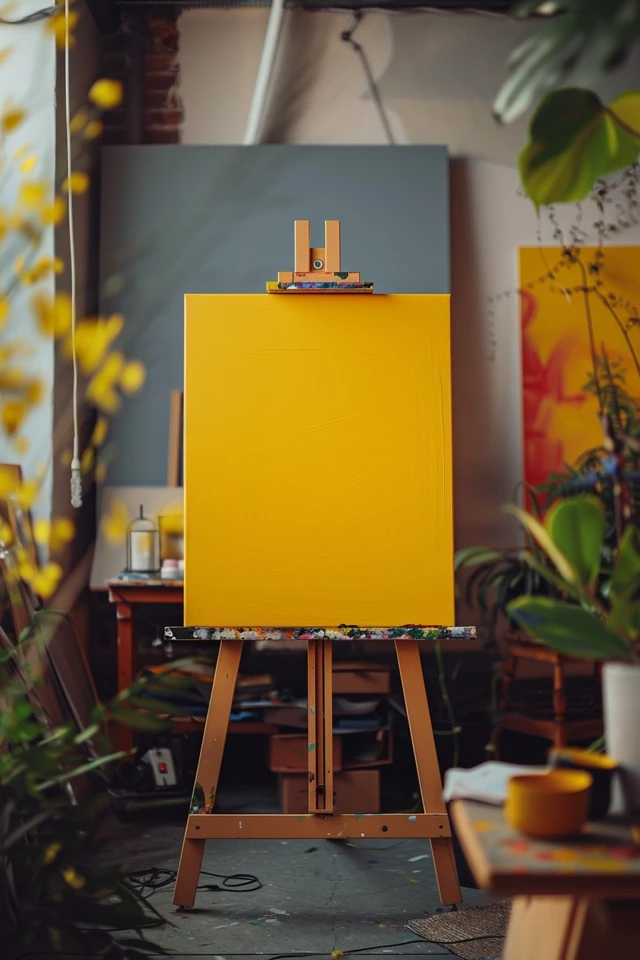Hello, art enthusiasts! Are you looking to add depth and dimension to your art projects? Shading techniques can be a powerful tool in transforming your artwork from flat to stunningly lifelike. In this tutorial, I will guide you through the process of shading yellow to create depth in your art.
Shading is a fundamental technique used by artists to add value and create the illusion of three-dimensionality. By manipulating light and dark areas, we can make objects appear closer or farther away, giving our artwork depth and realism. In particular, the color yellow is a versatile choice for shading that can bring warmth and vibrancy to your art.
So, whether you are a beginner or an experienced artist, these yellow shading tips will help you elevate your art projects to a whole new level. Let’s dive in!
Key Takeaways:
- Vary the size of objects and use a horizon line to create depth.
- Use shading to make objects appear closer or farther away.
- Experiment with line strength to enhance the illusion of distance.
- Consider the placement of warm and cool colors to create depth.
- Add highlights and shadows with different shades or tones of yellow.

Using Color Perspective to Create Depth in Art
Color perspective is a powerful technique that leverages the qualities of pigments to bring depth and visual interest to artwork. By understanding the properties of pigments and how they interact, artists can create captivating compositions that draw the viewer into a three-dimensional world.
Understanding Pigment Qualities
When working with color perspective, it’s crucial to consider various pigment qualities. These include color temperature, transparency, granulation, and saturation. Each of these characteristics plays a role in conveying depth in your artwork.
- Warm colors, such as yellow, have a tendency to appear more forward, seemingly coming closer to the viewer. On the other hand, cool colors tend to recede into the background, creating a sense of distance and depth within the composition.
- Transparent colors have a unique quality of appearing to recede in a painting, while opaque colors have the opposite effect, coming forward and demanding attention. Knowing how to strategically use these transparent and opaque pigments can enhance the perception of depth in different elements of your artwork.
- Granulating colors introduce texture to the surface of the artwork, lending a tactile quality. These colors often come forward in a painting, adding depth and dimension. Conversely, non-granulating colors recede, creating the illusion of distance. By skillfully incorporating both types of pigments, artists can achieve a balance of texture and depth.
- Saturated colors are intense and vibrant, appearing closer to the viewer and demanding attention. They can be used to highlight focal points or create a sense of immediacy. On the other hand, neutralized colors appear more subdued and tend to recede into the background, adding depth and contrast to the composition.
By understanding these pigment qualities and their effects, artists can wield color perspective as a powerful tool to create depth, texture, and visual interest in their artwork.

Steps to Create Depth in Your Artwork
Creating depth in artwork involves several key steps that can help bring your artwork to life. By carefully considering the composition, creating a value sketch, planning highlights, working with a limited color palette, and using a light-to-dark approach, you can achieve a sense of depth and dimension in your artwork.
The first step is to focus on the composition of your artwork. A well-thought-out composition includes elements in the foreground, mid-ground, and background, which helps create depth and a sense of distance.
Next, create a value sketch, which is a monochromatic representation of your artwork using only one color. This allows you to evaluate the lights and darks in your composition and establish a strong foundation for creating depth.
Planning highlights is another important step. You can create highlights by utilizing negative space, masking fluid, or opaque paints. By strategically saving white areas of the paper or adding highlights, you can enhance the sense of depth and bring certain elements forward.
Working with a limited color palette is particularly helpful for beginners. By focusing on a few harmonious colors, you can better understand how color interacts and create a sense of depth and balance in your artwork.
Finally, working from light to dark is crucial for creating depth. By layering colors and values, starting with lighter shades and gradually building up to darker tones, you can add depth, complexity, and a three-dimensional effect to your artwork.


